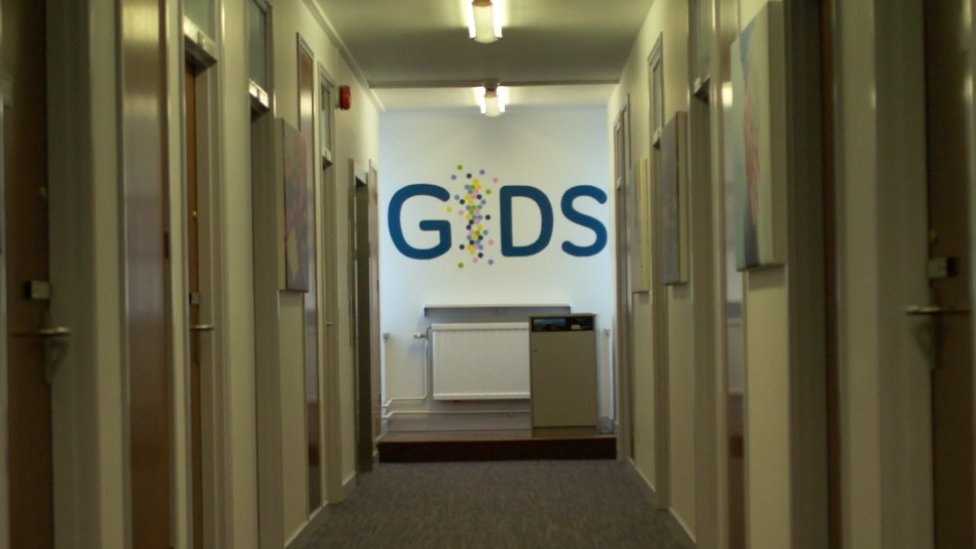Bell v Tavistock A Trans Viewpoint

My Conclusion on Bell v Tavistock is that the judgment is wrong and that the GIDS Policy, was fit for purpose at the time Bell was a patient, although in need of revision to improve access to treatment, the court should have no involvement in GIDS care pathway.
For my full responce to the judgment and reasons for the conclusion please read on……..
Trans Voices
My name is Hilary Cooke, I would like to introduce myself and why I am writing this article.
I feel it is important at this time for the voice of trans people to be heard amongst the overwhelming background noise of the ‘concerned’ exceedingly small minority who have amplified their voice through the mainstream media, to try and instil a ‘moral panic’ amongst the majority of people in the UK. A majority that supports the rights of trans and non-binary people to live their lives without discrimination or fear of hate from those who want to harm and remove the rights of trans people. I feel it is time for those of us who have the lived experience of being transgender, transsexual, non-binary to stand up together, to support our younger peers who are fighting the same fight we have all had to fight be recognised as who we are. To push back against the fear and discrimination being pushed by a small but loud group and stand fast with our many allies in support of trans and non-binary people, their human rights and right to access medical treatment appropriate to their needs.
I am not a journalist, a member of government, a practitioner of law, a Doctor of Medicine, or any other specialism as many of the commentators on this case. (Please Note! That many of those with these titles who have commented on this case are not specialists in transgender medicine or the treatment of individuals with the condition now known as ‘Gender Incongruence’).
So, you may ask, what are my qualifications to speak on the issues around the outcome of Bell v Tavistock?
Although I have no official recognised qualification such as Dr or Professor, psychologist, psychiatrist etc., in the subject of GI ‘gender incongruence’ (a sexual health condition ICD11 2019 revision), also referred to as GD ‘gender dysphoria’ (now recognised as not being a mental health condition, but part of the diversity of human development. Referred to in ICD10 revision 2019 as ‘Gender Dysphoria previously Transsexualism’) which would require several years of studying, to gain knowledge and develop your personal thoughts and beliefs on which you base your ideas on the subject, I only have my lived experience.
A lived experience of 64 years and 9 months that included being a GNC (gender non-conforming) child, gender incongruent adolescent and transgender adult, eventually being recognised and diagnosed as transsexual. It is a reality that no one should question, that adult trans people were once young GNC, trans people as one naturally follows the other. Hopefully, we can all agree that that statement is correct. I believe my experience and knowledge of being GNC, gender incongruent, transgender, transsexual, gives me knowledge and an understanding equivalent too, if not greater than, that you could gain by studying the subject alone.
Almost all trans people will confirm they have had to become self-analytical about their gender identity from a young age, taking many years to understand who they are before they are open to discussion with others ‘coming out as trans’. They will have had to research and discover care pathways to access treatment, becoming knowledgeable of what treatment is available and the effects of each treatment, long before they are able to access them to resolve their gender incongruence / dysphoria.
I am not stating that my personal experience is the same as every trans person. I am not the voice of all trans people, as being transgender is a personal experience which only the individual concerned can give an accurate account. In addition to my own personal experience, I have had the good fortune, through my voluntary work, to meet many trans and non-binary individuals, including young people, adults and parents and carers of young gender incongruent people and partners of trans people on a weekly basis. Their experiences have helped to inform my wider understanding of gender identity, such as non-binary gender and gender fluid identities. Their unique stories of self-awareness of gender, the similarities in the progression of discovering how one’s own gender identity fits in with their social group and wider society, managing their gender incongruence. These stories would be recognised by those who are trans or non-binary gender and the professionals who work to support them and provide health care.
I have been working to raise awareness of trans people and the discrimination they face since 1986. I am Chair of the South East Gender Initiative and a voluntary CEO of Medway Gender & Sexual Diversity Centre since 2011. These community based voluntary organisations are led by trans and cisgender people to deliver support for Trans & Non-binary people their families and friends plus services for the wider LGBTQIA+ communities and deliver awareness training for organisations. You may conclude that my overall knowledge and experience gives me a position to speak about transgender experiences.
To understand the needs for young trans, non-binary and gender non-conforming individuals and the difficulties created for them by the judgment in Bell v Tavistock, you need to understand the challenges involved in accessing appropriate NHS healthcare.
Trans health care experience for young people

To gain the full perspective of the health care experience for young GNC people, we need to look at the NHS care pathway for young gender incongruent people and the timeline to access treatment.
It is normal practice within GP services (General Practice) to refer young people to the local CAMHS (Child and Adolescent Mental Health Service) to identify any comorbidity that could be influencing the mental health of a young person, this is not a necessary step as GIDS (Gender Identity Development Service) will undertake a MH (mental health) assessment on all referrals, but it is a step that most GPs will utilise. In parts of the UK there are long waiting times to see CAMHS and this wait could be 12+ months, unless serious self-harm or suicidality are apparent. Once an individual has been referred to, and been seen by, CAMHS they would assess the individual’s mental health. If they identified them as having a gender identity which did not match the gender usually associated with the sex assigned at birth, they would refer them back to GP’s with a request for them to refer the young persons (Under 18 years) to the Tavistock GIDS. There has been for a several years, very long waiting lists to access GIDS. Currently they are unable to advise how long the wait will be, they are currently seeing people referred to GIDS in 2018. That is 104 weeks against an 18-week target.
This 2-year wait is on top of the time taken to get from first requesting help, usually over a year, to being referred to GIDS. This excessive waiting time can cause individuals to become desperate for help to prevent changes during puberty, leading to poor mental health, anxiety, depression, self-harm and suicidality. American study 2020, UK Study
You should at this point realise that accessing medical support via the NHS GIDS is not a quick or easy task, as the ‘concerned’ minority would have you believe.
Going through, what a trans person deeply believes and feels to be the wrong puberty, can cause trauma that will affect them for life, both psychologically and physically due the masculinising or feminising secondary characteristics that puberty brings. It is during this time that gender incongruent young people need PB (puberty blocking) treatment, to postpone the development of secondary sex characteristics. This is not determined by an arbitrary age (16yrs old for example) but by the biological clock of puberty which is individual to each person.
GIDS had a policy of not beginning to prescribe PB (GnRHa) treatment until the individual reached 16yrs of age up until 2011. Since then, it has followed a duel course of action where they would keep to the 16yrs old rule unless there was an overriding need to prescribe them to those younger than 16yrs.
This is why so few individuals under 16yrs old referred to GIDS were prescribed PB treatment. GIDS also had a policy that they would not prescribe CSH (cross sex hormones) until the individual had been on PB treatment for 12 months, effectively adding a year to the care pathway to access CSH. The Number of young people referred to GIDS for the year 2019/2020, out of 2728 referred to GIDS 161 young people (5.902%) were referred by GIDS for puberty blockers of these 95 (3.482%) were under 15 years old.
If we put this timeline together, we can see that individuals in need of treatment when they reach puberty could wait 3+ years to get their first appointment at GIDS, and then have at least (usually longer) a 1-year minimum assessment period before being prescribed PB treatment, if that is what the individual requested, and the medical team agreed was the best course of action. Even when puberty has progressed beyond the point where PB treatment could prevent trauma of developing secondary sex characteristics GIDS would hold to their policy of needing to progress to CSH treatment via 12 months on PB treatment.
We can see that the timeline is extending from the point of seeking help to receiving a referral for PB treatment is approximately 4 years and the waiting time for a first appointment with GIDS is continuing to grow. During this time the young trans person will be doing all they can to survive and educate themselves during this long waiting period so they can understand what treatments are available, their effects, and how to explain their individual needs to doctors and psychologists who are the gate keepers to treatment.
This GIDS PB policy was in place to give the individual time to reflect on the treatment they were requesting. PB treatment not only has physical effects but also psychological effects reducing the anxiety caused by unwanted erections or periods which are beneficial to gender incongruent people.
If PB treatment has not been prescribed in time to prevent the development of secondary sex characteristics it leads to unwanted developments that would need surgery or other medical procedures to correct. Some changes cannot be reversed, and the individual will have to live with these unwanted changes for the rest of their lives.
GIDS Care pathway pre the Bell v Tavistock Judgment
NHS STANDARD CONTRACT FOR GENDER IDENTITY DEVELOPMENT SERVICE FOR CHILDREN AND ADOLESCENTS
Appropriate assessments prior to referral

The GIDS is a multidisciplinary service in that the initial assessment phase by the psychosocial team precedes medical involvement and is aimed at understanding the young person’s development and gender identification in the context of their family background and life experiences.
Your child or teenager will be seen by a multidisciplinary team at GIDS including a:
clinical psychologist, child psychotherapist, child and adolescent psychiatrist, family therapist and social worker
The team will carry out a detailed assessment, usually over 3 to 6 appointments over a period of several months.
Depending on the results of the assessment, options for children and teenagers include:
Family therapy, individual child psychotherapy, parental support or counselling, group work for young people and their parents, regular reviews to monitor gender identity development,
Referral to a local Children and Young People’s Mental Health Service (CYPMHS) for more serious emotional issues,
A referral to a specialist hormone (endocrine) clinic for hormone blockers for children who meet strict criteria (at puberty)
Most treatments offered at this stage are psychological rather than medical. This is because in many cases gender variant behaviour or feelings disappear as children reach puberty.
Psychological assessment diagnosis
GIDS best practice is that specialist psychological assessment should be requested before any physical treatment can be considered as the intervention itself can mask the adequacy of the evaluation.
If the diagnosis confirms the person is gender incongruent, they will discuss what treatments are available to them. The first physical treatment offered for those who wish to prevent the development of secondary sex characteristics is Puberty Blocking treatment (GnRHa). It is recognised as internationally best practice to offer this treatment to young gender incongruent people. It is a reversable treatment that pauses the effects of natal hormone development until you stop the treatment, when the natal hormone development and natal puberty will resume.
Puberty suspension
Pubertal status
It is a requirement, according to the Endocrine Society and WPATH guidelines and UK service specifications, that a young person has commenced puberty before any physical intervention is agreed, as the GI/GD may resolve once puberty commences. If GI/GD is constant and persistent for a period of 2 years from the commencement of puberty it is recognised they this will not change in most cases in later life.
If they are over 16yrs old and they, the doctors and psychologists agree it is beneficial the individual will discuss the use of PB treatment, and they will be referred to endocrinology specialists to access the treatment required. There is a requirement that they be helped to develop an adequate understanding of the treatment being offered and the potential loss of fertility. Clinicians need to satisfy themselves that the young person has the capacity to consent.
If they are under 16yrs old, the young person will be accessed on the Gillick principles of consent. For their ability to understand all the effects of the treatment being offered. they, the doctors and psychologists agree it is beneficial the individual will discuss the use of PB treatment, and they will be referred to endocrinology specialists to access the treatment required.
Primary intervention: GnRHa

In those whose GD is clearly established and long-standing and who have participated fully in the multidisciplinary assessment process at the GIDS, GnRHa is the recommended first-stage medical intervention. This provides a physically reversible option to suspend sex hormone production. It also has benefits of reducing the anxiety of ongoing physical development and allows further time for psychotherapeutic intervention and exploration. Young children in early stages of puberty also request this treatment to prevent the development of unwanted bodily characteristics that may make life more difficult in later life (deep voice, facial hair and changes, breasts etc.,) this should be considered to render unnecessary certain surgical interventions such as mastectomy.
For children under 16, parents have the responsibility to agree to support any treatment (or not), with the clinicians determining the child’s capacity to give consent, upholding the child’s best interests in line with the UK General Medical Council guidance.
The decision to use PB treatment to suspend puberty is not taken as consent for the next stage of treatment options.
The next stage is not fully reversable as it causes pubertal development in line with the hormonal regime put in place to replace the natal sex hormone. It has its own criteria and assessment
Eligibility for cross-sex hormone/gender-affirming hormone treatment
Cross-sex hormone treatment, currently referred to as gender-affirming hormone treatment may be considered once the young person has confirmed they wish to commit to living permanently as the gender they identify with. At GIDS there are psychosocial criteria that need to be met, including that the young person shows evidence of presenting coherently in the gender role with which they identify and that their mental health is not deteriorating. Other health and wellbeing issues are also looked at, for example smoking and vaping are actively discouraged.
The capacity to give informed consent is an absolute requirement prior to commencing sex hormone treatment, ideally with the support of the parents, although after 16 years of age the latter is not needed under the English, Welsh and Scottish law.
GIDS do not refer patients for GRS / GCS (gender reassignment surgery / gender confirmation surgery). Surgical treatment is accessed via the Adult Gender Identity Clinic which those attaining the age of 18 yrs old with GIDS are referred on to for further assessment and treatment.
In adults (Over 18yrs) PB treatment is given at the same time as CSH treatment to allow the masculinising or feminising effect to take place more easily by supressing the natal sex hormone.

It was stated by the court that their judgment on Bell v Tavistock was not to be taken as being against the use of PB as part of the care pathway for young people who are seeking help regarding their gender incongruence or other treatment such as cross sex hormone therapy or surgery to support their gender identity and needs being recognised and met. The judgement was based on a young person’s ability to consent to treatment.
The case in my view seems to have asked the wrong questions and delivered the wrong outcome
In Bell’s witness statement in the proceedings, they set out their experience of being prescribed PBs and then CSH.
It should be noted that some of the details relating to Bell’s treatment and the information Bell was given (at GIDS and the first defendant) is disputed.
This case is a judicial review of the GIDS policy, Dame Victoria Sharp P., Lord Justice Lewis, Lieven J. Approved Judgment Bell v Tavistock not a tort (Claim for damages) action relating to the specific facts surrounding the first claimant’s treatment and it is not necessary therefore to resolve any factual dispute.
It would have been good in this case if the court had looked at disputed facts, as facts and the evidence given by the claimant and their representatives are particularly important to a review of GIDS policy and the outcome of this case.
If this were a case to discover if Bell had been given the wrong treatment advice, allowing them to seek personal redress for the situation they now find themselves in, that would be one thing. But when it comes to deciding consent for the all young trans people you need to look further than Bell’s case. Namely was Bell a typical example of the outcome of the treatment and care pathway under question or was their outcome specific to their personal circumstance and therefore not an example to base a definitive judgement on GIDS Policy when considering any young person’s ability to consent.
It brings into question what were the needs of Bell, were these needs met at the time of the intervention and were they able to consent to treatment based on their need?
It is clear from Bells own evidence that they desperately wanted to be seen and recognised as male.
Bell describes a highly traumatic childhood.
From the age of 4 or 5 she displayed gender non-conformity, associating more with male games and clothes. She felt highly alienated at secondary school and took birth control pills to stop her periods. She felt disgusted by her body and became depressed and highly anxious.
From the age of 14 she began actively to question her gender identity and started to look at YouTube videos and do research on the internet about gender identity disorder and the transition process. She said:
“I thought I had finally found the answer as to why I felt so masculine, uncomfortable with my female body and why I was so much more similar to a stereotypical boy than to a stereotypical girl in physical expression and interests.”
When she was 15, the Bell was referred to GIDS but did not see them until they were 16yrs old. When she was at the local Children and Adolescent Mental Health Services clinic she remembered:
“the psychiatrist attempted to talk of the gender spectrum as a way of persuading me to not pursue medical transition. I took this as a challenge to how serious I was about my feelings and what I wanted to do, and it made me want to transition more. Now I wish I had listened to her.”
She was first seen at GIDS aged 16 and had several appointments spread out over 1 year and 9 months. She was referred to UCLH in June 2013 and after three appointments commenced PBs. She was given advice about the impact on her fertility, but her priority was to move on to testosterone.
At 16 years of age, she would be considered under UK law to have the ability to consent to medical treatment. The Gillick provision on consent would not be required.
She said that at 16, she was not thinking about children and, in any event, egg storage was not available on the NHS.
Gametes storage is available as part of the care pathway for trans people whose medical treatment may affect future fertility, on the same provision that applies to other medical treatment, such a chemotherapy. It is difficult to obtain due to NHS CCG’s (Clinical Commissioning Groups) restricting access to gametes storage and GP’s reluctance to support the requests of trans people.
In April 2014 she was referred to an adult GIC (Gender Identity Clinic) to discuss surgery.
You need to be 18 years of age to access the adult GIC
“I was visualising myself becoming a tall, physically strong young man where there was virtually no difference between me and a biological boy.”
After commencing testosterone at 17 years of age changes to her body commenced rapidly: these changes included genital changes, her voice dropping and the growth of facial and body hair.
Bell was 17 years of age when she consented to CSH treatment, she would be considered under UK law to have the ability to consent to medical treatment. The Gillick provision on consent would not be required.

It is also clear from some of Bell’s interviews that their gender expression and gender non-conformity were apparent from a young age, although they did not seek medical help until they began to experiencing puberty and did not see a specialist at the Tavistock GIDS clinic until they were 16 years old.
Being referred to the Tavistock Gender Identity Development Service at 16 years old they had, according to GIDS, assessment sessions, over a 21-month period with a team of gender identity specialist psychologists during which time they requested the referral for PB treatment. Bell advised they had 3 1-hour sessions discussing PB treatment at UCLH before they were prescribed PB at 17 years of age.
It would have been advised by GIDS that prescribing PB is part of their care pathway to give them time to consider what they wanted to do about their future gender identity. That they would not prescribe cross sex hormones until you had been taking PB for a year and had shown a commitment to living in the gender that matched their gender identity.
The consent you give for PB treatment is only for the PB’s not for other treatment.
Bell advises the following in interviews of her thoughts along her timeline up to being seen by GIDS
‘The couple of years leading up to that point, I was stuck in severe depression and anxiety. I felt extremely out of place in the world. I was really struggling with puberty and my sexuality and I had no one to talk these things through with. I identified most with butch lesbians and I initially felt like I had found my tribe’.
‘However, the women that I saw through the internet still seemed to be comfortable with their bodies and having sexual relationships. So, I think that I began to doubt myself and I began to think that there must be more to it. When I stumbled upon transsexualism, that was me – I was meant to be a boy. It made absolute sense to me and I related so strongly to those women [online] that had started to undergo medical transition. I felt that I needed to start with medical transition as soon as possible in order to achieve my happiness’.
On the treatment they were given by GIDS she said:
‘I would say it was saving me from suicidal ideation and depression in general and at the time I felt it relieved all those mental health issues I was feeling, alongside gender dysphoria’
‘They said after three one-hour-long appointments they were prescribed puberty blockers’
‘Hormone blockers were viewed as a means to an end and I did not like being on them at all. I was very happy and excited to start cross-sex hormones, as I thought that I could finally start to live my life how I was supposed to’.
But now 7 years after taking the decision to commence PB treatment and CSH at 17yrs old and 6 years after being referred to the adult gender identity clinic at 18 years old and requesting surgery at 20 years old
They felt there wasn’t enough investigation or therapy before they reached stage 2 CSH treatment.
‘I should have been challenged on the proposals or the claims that I was making for myself, I think that would have made a big difference as well. If I was just challenged on the things I was saying’
‘When surgery came around, I thought of it as more of a practicality situation. I was sick of wearing my binder. It was painful and an annoyance. I was unhappy with how my breasts looked, even more so at that point than before’.
Let us look at these statements and how they fit the care pathway timeline.
It must be understood that there is no magic test to diagnose a person’s gender identity. The only one that knows the true gender identity is the individual themselves. Trans people know this and are being truthful when trying to describe how they feel based on the societal expectations placed upon them to fit the norms of gender assigned at birth and how gender incongruence makes them feel about themselves.
It must also be recognised that Bell’s statements are how they feel now and phrased in a way to support their case against Tavistock.
In interviews they have described how they were trying to convince the psychologists and doctors that they were transgender. Their first statement above describes how they were feeling whilst coming to an understanding of themselves, their sexuality and gender identity.
It is not an unusual for trans people to have this exploration of self. All the trans and non-binary people I know have travelled this road of self-discovery. It is not that the internet is convincing people they are transgender, the internet is just like a library full of information if you search for it. No one is being forced to act in a certain way and it certainly is not a trend or fashion or lifestyle choice. You can ask any trans person who has gender incongruence, and they would advise they would prefer to have been born with a gender identity that matched their bodies sex characteristics.
Gender identity and sexuality are not connected. They are part of the 4 core elements that make up who we are: biology – DNA – Sex Chromosomes, internal sense of self – gender identity, gender expression & sexual or romantic attraction. Trans people can be attracted to men, women, non-binary people, anyone no matter how they identify their own gender.
GIDS worked with Bell to assess their gender identity over a 21-month period, where they would have seen a team of psychologists who specialise in work with gender incongruent people. Not all people referred to GIDS go on to be referred for PB treatment. They would need to show a persistence over a two-year period in their gender identity and gender incongruence and reached Tanner stage 2 in pubertal development before they would be referred to this part of the care pathway.
This could be why from the 5.9% who are referred for PB treatment, most go on to CSH treatment. It could be taken as proof that the pre assessment work is only selecting those most likely to wish to continue with treatment to transition.
Was this case unusual from the majority of those offered treatment?
I do not believe that the case Bell presented to the clinicians at GIDS was that unusual from other young trans people. They had been pre assessed by CAMHS who referred them to GIDS. There was a need to progress to a treatment stage to alleviate the poor mental health described by Bell during the early assessments and due to their age being 16 years old and their wish to access the medical pathway it was most likely that they would be provided the option for PB treatment as part of the ongoing assessment.
Was the outcome of Bells treatment different to most outcomes GI/GD treatment?
GIDS have strict criteria following NHS guidelines and international standards of best practice for the treatment of GI/GD condition for young people. As this criterion limits the cohort of individuals referred on to medical treatment, the outcome for Bell would in my view been similar to others who describes their history and identity in the way Bell did. That they were referred onto PB to give them more time to think about their future and alleviate as far as possible, for a 16-year-old, the bodily changes brought about by their puberty, I believe this was the correct decision.
What physical & psychological influence did PB have on their transition process?
It is difficult to ascertain how PB treatment influenced Bell’s transition process. Bell had obviously progressed far enough into puberty to develop breasts which led for need of chest surgery later in their transition. For some of the physical benefits of pausing puberty it was too late. PB would though have helped in other physical ways by slowing or preventing periods and any further development typical in late female puberty, It would also have caused menopause symptoms whilst the body adjusted to having a minimum of oestrogen in their system. This would have helped a trans masculine person psychologically by stopping the influence of oestrogen on the body and mind.
Did PB influence their decision to transition?
There is no evidence that the use of PB affects an individual’s decision to transition onto stage 2 CSH treatment.
It is evident from Bell’s interviews and evidence that she had decided to transition before being referred to GIDS. Bell only agreed to PB treatment as part of Stage 1 so they could progress to stage 2 and access CSH treatment. They gave the GIDS team a history that convinced them that Bell passed the criterion to access PB treatment. At 16yrs of age they could legally consent to this treatment.
Due to the strict criterion to access Stage 1 PB treatment it would be expected that the majority of those who received PB would progress to stage 2 as part of their transition. If the number of individuals who did not progress onto stage 2 was high, it would lead to questions about the criterion gate being too easy to pass. Conclusion being that some GI/GD individuals may have failed to access PB support in time, which could have benefited them in later life, in an attempt to make sure only those who progressed onto PB would be the cohort who would most likely persist to continue their transition.
Would they have started Hormone therapy without the PB treatment?
There is no evidence that the use of PB affects an individual’s decision to transition onto stage 2 CSH treatment.
To repeat again, it is evident from Bell’s interviews and evidence that she had decided to transition before being referred to GIDS. Bell only agreed to PB treatment as part of Stage 1 so they could progress to stage 2 and access CSH treatment. They gave the GIDS team a history that convinced them that they passed the criterion to access CSH treatment and at 17 years of age was legally able to consent to stage 2 Cross Sex Hormone treatment to induce a masculine puberty.
Would they have had surgical procedures without the PB Treatment?
There is no evidence that the use of PB or CSH treatment affects an individual’s decision to transition onto stage 3 gender affirming surgery.
GIDS are not able to refer individuals to stage 3 surgery, as their service only works with individuals until they reach 18 years of age. To access any surgery people would need to access one of the Adult GIC’s (Gender Identity Clinic).
The GIC would carry out its own assessment to look at the individual’s need and decide if surgery options are in their best interest. Bell was discharged from the care of GIDS and referred to the GIC at 18 years of age. They were 20 years of age when they consented to surgery to remove their unwanted breast tissue.
There is currently a 3 to 4 year waiting list to access the adult GIC service for a first appointment and then a 2-to-3-year period to access surgery once the individual has completed 2 years of CSH treatment and lived as their gender identity for 2 years.
You should conclude from the above text that accessing NHS treatment for gender incongruence (Dysphoria) is not quick or easy. It takes years to access the treatment and many years to progress through the care pathway, which places gates and hurdles which you need to navigate to progress to the next stage of treatment. You need to be convincing and unwavering in your decisions if you want to access medical interventions to affirm your gender identity and cure the gender incongruence / dysphoria you have endured.
There are no psychological interventions that can change an individual’s Gender Identity or Sexual Attraction. Both have been tried during the 50s, 60’s and 70’s and the results proved a failure. You can make someone hide their gender identity or sexuality, but you cannot change it.
Some people do have gender identities outside of the binary of male or female. Some people are somewhere in between, at a fixed point or are genderfluid moving between masculine and feminine expression.
The Supporting Evidence Presented

There was a distinct bias against gender affirmative care in the individuals evidence supporting Bell’s case. The court should have been aware of this bias when reviewing the witnesses to give professional opinions, and their status with regards to working with trans health care provision and support.
There was also a bias against interested parties who could have provided balance to the claimants arguments on GIDS Policy for treating Gender Incongruent individuals.
Now let’s look at who the court heard during the case Between:
(1) QUINCY BELL (2) MRS A Claimants
and
THE TAVISTOCK AND PORTMAN NHS FOUNDATION TRUST (GIDS)
Defendant NATIONAL HEALTH SERVICE COMMISSIONING BOARD (NHS ENGLAND)
Interested Party
(1) UNIVERSITY COLLEGE LONDON HOSPITALS NHS FOUNDATION TRUST an NHS provider of Transgender health care.
(2) LEEDS TEACHING HOSPITALS NHS TRUST an NHS provider of Transgender health care.
(3) TRANSGENDER TREND LTD Registered in England No. 12035713
Transgender Trend describe themselves as an organisation of parents, professionals and academics based in the UK who are concerned about the current trend to diagnose children as transgender. an anti-gender affirming lobby company created and managed by Stephanie Davies-Arai She founded the organisation Transgender Trend in 2015, The organisation publishes materials that promote non acceptance of Transgender Identities in young people and a belief that psychological interventions (psychotherapy to dissuade those with DG /GI from transitioning, this could be viewed as conversion therapy) will dissuade gender incongruent people from transitioning.
Interveners
Mr Jeremy Hyam QC and Mr Alasdair Henderson (instructed by Sinclairslaw)
for the Claimants Ms Fenella Morris QC and Ms Nicola Kohn (instructed by DAC Beachcroft)
for the Defendant
The Interested Party did not appear and was not represented
Mr John McKendrick QC (instructed by Hempsons) for the First and Second Interveners
Mr Paul Skinner and Mr Aidan Wills (instructed by Ai Law) for the Third Intervener
Let us look at who the court refused to hear as interested parties.
Mermaids. Registered Charity Number: 1160575
Mermaids has been supporting transgender, non-binary and gender-diverse children, young people, and their families since 1995. Mermaids supports transgender, non-binary and gender-diverse children and young people until their 20th birthday, as well as their families and professionals involved in their care. Transgender, non-binary and gender-diverse children and teens need support and understanding, as well as the freedom to explore their gender identity. Whatever the outcome, Mermaids is committed to helping families navigate the challenges they may face.
Stonewall. Registered Charity Number 1101255
Stonewall was founded in 1989 by a small group of people who had been active in the struggle against Section 28 of the Local Government Act. Section 28 was an offensive piece of legislation designed to prevent the so-called ‘promotion’ of homosexuality in schools; as well as stigmatising lesbian, gay and bi people, it galvanised the LGBT community. In 2015, and following a six-month consultation with trans communities, Stonewall became trans inclusive
On behalf of the defendant and the Trusts there are statements from
Dr Polly Carmichael, Director of GIDS, A consultant clinical psychologist at the Tavistock and Portman NHS Centre, which is England’s only gender identity clinic for children. She is the UK’s leading clinical psychologist in the treatment of transgender children.
Professor Gary Butler, Consultant in Paediatric Endocrinology at University College Hospital London. He holds an Honorary Personal Chair in Clinical Paediatrics at the UCL Great Ormond Street Institute of Child Health. He was given the European Society for Paediatric Endocrinology Outstanding Clinician Award in 2020 as a result of his clinical expertise and significant national and international developments in the clinical practice of paediatric endocrinology. This is the highest award for a clinical doctor in this field.
Dr Nurus-Sabah Alvi, Consultant in Paediatric Endocrinology at Leeds General Infirmary and Clinical Lead for Endocrine Liaison Clinics of the GIDS, Leeds. Paediatric Endocrinology is the study of hormones in children and the effect that they have in growth, puberty, and general development. Hormones are crucial in all aspects of not only physical, but emotional and psychosexual development, from as early as 5
These witnesses describe the care pathway and treatment that the children and young people receive at GIDS and at the Trusts.
The court has also had a wide range of evidence from a variety of people concerned with the treatment of those under 18 with PBs.
We will refer to that evidence and its sources as appropriate below
Michael Biggs. Associate Professor of Sociology at the University of Oxford,
Mr Biggs was exposed for posting transphobic statements online under a fake twitter handle: @MrHenryWimbush according to this report.
Biggs contributed to two books which are not supportive of gender afirmative care for young trans and non-binary gender identities or the work of GIDS’. They based on the belief of the authors / contributors, that gender identity is not innate, that gender dysphoria is a psychological disorder that needs treatment (psychotherapy to dissuade those with DG /GI from transitioning, this could be viewed as conversion therapy)
- Inventing transgender children and young people
Michael Biggs,
H Brunskell-Evans, Philosopher/ social theorist, co-author of Declaration of Women’s Sex Based Rights. Anti-trans rights activist.
Stephanie Davies-Arai Director of Transgender Trend. She is Anti gender affirming treatment for young trans people, has no qualifications for the treatment of gender dysphoria or gender incongruent young people. She is an instructor in Teacher Effectiveness Training, was one of the founders of Lewes New School, a small independent school in East Sussex, where she was a parent governor. & other contributors.
2) Britain’s experiment with puberty blockers
M Biggs, H Brunskell-Evans,
M Moor Professor, Social Justice & Global Responsibility, Anti gender affirming treatment for young trans people, is a supporter of ROGD (Rapid Onset Gender Dysphoria) theory. ROGD is not a recognised form of GD and is based on one small descriptive study based on a questionnaire posted on 3 web sites / forums 4thwavenow.com, transgendertrend.com, youthtranscriticalprofessionals.org. The study has been challenged due to it methodology. The research did not include voices of young trans people, only the voices of parents who were members of online networks discussing their doubts or non-acceptance of their children’s gender identity when they have told them they are trans.
Biggs has also published articles for Transgender Trend.
Professor Neil Evans. Professor of Integrative Physiology at the Institute of Biodiversity Animal Health & Comparative Medicine University of Glasgow, UK
He gave his views on the use of puberty blockers based on his work with sheep. His work is widely supported by Transgender Trend and other anti-gender affirmative care activists.
Professor Gene S Feder BSc, M.B.,B.S., M.D.(Lond.), F.R.C.G.P. Professor of Primary Care, Bristol Medical School (PHS) Bristol Population Health Science Institute Centre for Academic Primary Care
Although he has no published history of interest or study regarding the treatment of individuals with gender dysphoria, he offered an opinion advising he would not recommend the NHS treatment. Treatment which draws heavily on international guidelines that recommend approaches in care for gender dysphoria. An NHS contract with the Tavistock trust issued in 2016 says that it will “conform” or “broadly conform” to standards of care issued by the World Professional Association for Transgender Health (WPATH) in 2012. These say that they reflect the best available science and “professional consensus”.
Professor Gillberg, a professor of child and adolescent psychiatry, Gillberg Neuropsychiatry Centre, University of Gothenburg
Professor Gillberg has contributed to several letters describing gender affirming care as an experiment and a belief that psychological therapies should be offered to dissuade transition. (psychotherapy to dissuade those with DG /GI from transitioning, this could be viewed as conversion therapy). He has stated he believes gender affirming care should not be given until the individual has undergone at least 4 years of psychotherapy.
Professor Hruz (Associate Professor of Paediatrics, Endocrinology and Diabetes at Washington University, St Louis, USA)
The Southern Policy Law Centre advises: Dr. Hruz is an Associate Professor of Paediatrics in the Division of Paediatric Endocrinology and Diabetes at Washington University School of Medicine in St. Louis. He is proffered as an expert witness (by ADF) based on his study of “existing literature related to the incidence, potential aetiology and treatment of gender dysphoria.” … Translated, it appears to mean that he has read some things about it. Dr. Hruz admits that he has not treated any transgender patients, patients with gender dysphoria, conducted peer-reviewed research about gender identity, transgender people, or gender dysphoria; and is not a psychiatrist, a psychologist, nor mental health care provider of any kind.
The ADF Alliance for Defending Freedom an organisation founded by some 30 leaders of the Christian Right, the Alliance Defending Freedom is a legal advocacy and training group that has supported the recriminalization of sexual acts between consenting LGBTQ adults in the U.S. and criminalisation abroad; has defended state-sanctioned sterilization of trans people abroad; has contended that LGBTQ people are more likely to engage in pedophilia; and claims that a “homosexual agenda” will destroy Christianity and society.
Professor Stephen Levine Dr. Levine is Clinical Professor of Psychiatry at Case Western Reserve University School of Medicine USA. Levine is an American psychiatrist known for his research on sexuality. He was Chair of the fifth edition of WPATH, His written work looks to pathologies transgender people where WPATH have moved to remove GD / GI to a sexual heath condition which has led to Levine disagreeing with the current WPATH revisions move to a gender affirming care pathway for young trans people.
Professor Patrick Parkinson. University of Queensland Australia. He is the Academic Dean and Head of School for the TC Beirne School of Law. Professor Parkinson is a specialist in family law, child protection, law and religion and the law of equity and trusts. According to a report the-truth-about-trans-must-be-defended “Parkinson compared transgender people to the coronavirus, declaring it an ‘epidemic.’ he has compared transgender and gender diverse people to those with eating disorders, campaigned against LGBTQIA+ adoption. Parkinson has written in favour of psychotherapy to dissuade those with DG /GI from transitioning, this could be viewed as conversion therapy. On the 3rd November 2020 the The Brisbain Times published an article Advising the head of the University of Queensland law school, who faced controversy during his two years in the role over comments he made about transgender children, will step down in the new year.
Professor Scott (Director of University College London’s Institute of Cognitive Neuroscience) In her evidence she seeks to explain, from a neuroscientific point of view, “why I have significant doubts about the ability of young people under the age of 18 years old to adequately weigh and appreciate the significant consequences that will result from the decision to accept hormonal treatment for gender dysphoria”. This is an opinion from an individual with no direct health care experience for individuals with Gender Incongruence / Dysphoria.
An Anti-Trans Rights Activist, Professor Scott was a signatory to a letter raising concerns about the reform of the Gender Recognition Act 2004, which only affects a trans persons access to a gender recognition certificate which enable the holder to amend the assigned sex on their birth certificate.
Professor John Whitehall, Professor of Paediatrics and Child Health, Western Sydney University Medical School. He has admitted that in 50 years in medicine, he has never treated a child for gender-related issues and has (or had) published no papers to do with gender dysphoria or trans healthcare. Whitehall was listed as a speaker in support of gay conversion therapy for the Australian Christian Lobby.
Do GIDS get it wrong
Like many medical outcomes no one can know before treatment exactly what the outcome will be. But profesional specialists in transgender care have a very high success rate in positive outcomes for transgender people.
Cornell University studied the outcome for those who transition
What does the scholarly research say about the effect of gender transition on transgender well-being?
We conducted a systematic literature review of all peer-reviewed articles published in English between 1991 and June 2017 that assess the effect of gender transition on transgender well-being. We identified 55 studies that consist of primary research on this topic, of which 51 (93%) found that gender transition improves the overall well-being of transgender people, while 4 (7%) report mixed or null findings. We found no studies concluding that gender transition causes overall harm. As an added resource, we separately include 17 additional studies that consist of literature reviews and practitioner guidelines.
Bottom Line
This search found a robust international consensus in the peer-reviewed literature that gender transition, including medical treatments such as hormone therapy and surgeries, improves the overall well-being of transgender individuals. The literature also indicates that greater availability of medical and social support for gender transition contributes to better quality of life for those who identify as transgender.
There is no doubt that a extremely small minority (Approximately 2-3%) of trans people who transition to the opposite binary identity retransition to another point on the gender spectrum. It is not possible to state the main reasons for this, as there are many intersectional influences that can affect an individual’s happiness with their lives. Those who do retransition should receive the support they need, but not at the expense of restricting health care for the vast majority of trans people who need gender affirming care from a young age.
My Conclusion on Bell v Tavistock is that the judgment is wrong and that the GIDS Policy, was fit for purpose at the time Bell was a patient, although in need of revision to improve access to treatment, the court should have no involvement in GIDS care pathway.
Bell in British law was legally able to consent to all the treatment she received. Being over 16years of age Gillick competence was not applicable to her decision.
I believe the judgment that linked consent for puberty blocker treatment to the 2nd stage of transition, Cross Sex Hormone treatment is a bad judgment. There is another consent process after further psychological assessments before CSH are prescribed.
I believe the judgment has not considered:
The extent of self-analytical thought that young gender incongruent people undertake before coming out to others as transgender. The investigation and study they do to understand the care pathway and process of gender transition.
The time it takes to progress through the care pathway, including the many hurdles and challenges, psychological assessments they navigate to progress to the point of referral for puberty blocking treatment. The ability of young gender incongruent people to understand their treatment is far greater than a typical young person of a similar age who has not needed to navigate the path of a transgender GIDS patient.
That Bells experience and outcome is not representative of the majority of patients at GIDS.
The psychological harm that not prescribing puberty blockers at the correct time will have on young gender incongruent people.
For all the above reasons I believe the judgement in this case is wrong.
I hope that the inevitable review and the appeal of this case will come to the just conclusion that transgender, gender incongruent people deserve better gender affirming health provision in the UK
Hilary Cooke
hilary@mgsd-centre.org
Chair of South East Gender Initiative
CEO Medway Gender & Sexual Diversity Centre
Chair of Medway Pride Community Organisation
29th December 2020







I couldn’t help but be enthralled with the basic information you offered about your visitors, so much so that I returned to your website to review and double-check recently published content.